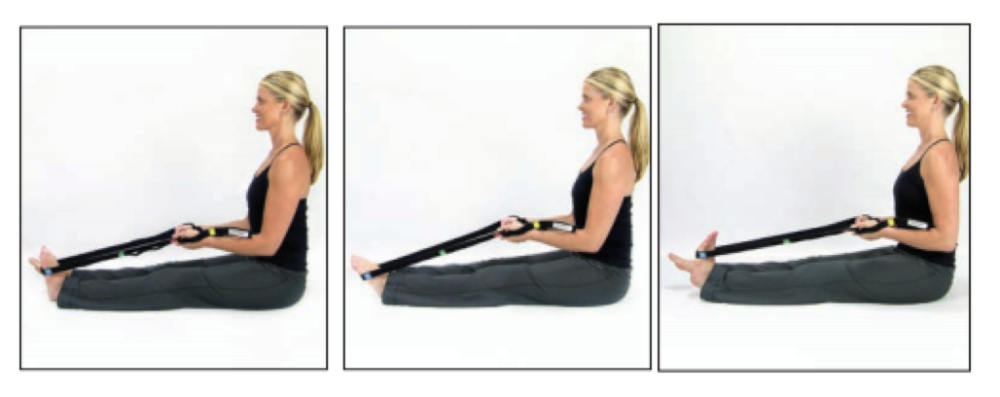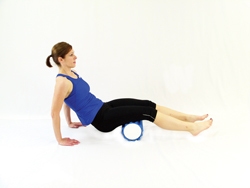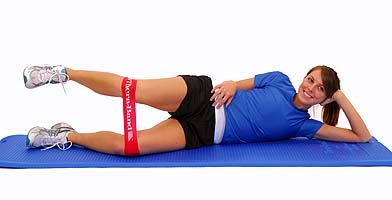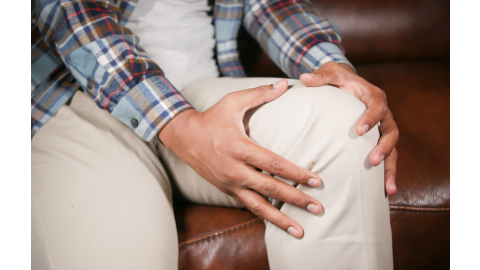Symptoms
- Generalized pain on the front part of your lower leg (your shins)
- Swelling or bruising may occur
- Discomfort may worsen with exercise
If your pain is localized in one place, it could be a stress fracture and you should see a doctor right away.
Cause
- Repetitive stress on your tibia (lower leg bone) and the tissue that connects your muscle to your bone
- Common in runners, dancers, and military recruits
Why do treadmills in particular cause shin splints?
Shin splints are more common when you are running on hills. Treadmills mimic downhill running when your heel hits the treadmill and is dragged backwards, pulling the front of your foot onto the belt. This accelerated motion is similar to downhill running and can cause painful shin splints if you lack the muscle strength in your shin and surrounding muscles.
How to Prevent Shin Splints
Stretching Warm-Up
Stretching your muscles before exercise can help prevent shin splints by relieving tightness. Start with a stretch for your Achilles. Stand on a step or platform with your heel hanging over the edge. Drop your heel for a nice stretch. Your calves and hamstrings are other important muscles to stretch before running. Using a stretch strap for the exercises below, it lets you stretch further than you could without an aid.
Gastrocnemius (Calf) Stretch
Sit on the floor with your legs stretched out in front of you. Place the middle loop around your right foot and hold the ends near your waist. Press your foot downward, keeping your knee straight. Then, pull the strap towards you to stretch your calf muscle. Switch legs and repeat.

Hamstring Stretch
Lie flat on your back with one knee bent. Place your opposite foot into the last loop in the strap. Hold the other end of the stretch strap with both hands near your chest. Slowly pull the strap and leg towards your head keeping your leg straight. Then push your leg downward to extend your hip. Relax and switch legs.

Heel Walks Warm-Up
Heel walks are an easy, no-equipment needed, way to reduce your risk of shin splints. It’s really as simple as it sounds. Point your toes up as far as possible and walk around on your heels. This targets your shin muscle, a difficult muscle to exercise directly. Do heel walks for 30 seconds before running and throughout your day. Slowly build up your time from 30 seconds to 90 seconds. This exercise sounds easy, but you’ll start to feel it pretty quickly.
Treadmill Incline
One of the problems with treadmill running is its similarity to running downhill. An easy way to fix this is by adjusting the incline on your treadmill. The incline should be at least 1% at all times. You can vary the incline by a degree or two every mile to make it feel more like outdoor terrain.
Orthotics
The right shoes and orthotics help absorb the shock from running to reduce your risk of shin splints. The treadmill’s lack of cushioning and give, unlike running on grass, means there is even more shock with each step. Wear shock absorbing orthotic insoles to give your feet support. Flat arches also put you at risk for shin splints, so consider arch supports if you have flat feet.
How to Treat Shin Splints
Pain Relief
Cold therapy offers quick pain relief for shin splints. Use an cold pack on your shins for chilling relief. Put your feet up and relax giving your shins a break from running. Wear a calf/shin compression sleeve for additional relief when walking or exercising.
Cross Training
If you have shin splints, it’s important to stop running or at least reduce the time you spend running, so your body can heal. Can’t stop exercising for that long? Try cross-training with a low-impact exercise that won’t put as much stress on your shins. Biking and swimming are two good alternatives.
Exercises & Foam Rolling
Exercising to increase your muscle strength is an important step to prevent shin splints from returning. In addition to strengthening your shins with heel walks, working the surrounding muscles can also help prevent shin splints in the future. Try these exercises using a TheraBand Resistance Band Loop.
Three TheraBand Loop Exercises for Shin Splints
 |
|
|
|---|---|---|
Foam Rolling
Using a foam roller can help relieve tension points, also known as trigger points, through myofascial release. As you roll over body parts, it relieves sensitivity and tightness in your myofascial tissue (tissue that covers the muscle). Apply a wrap to enhance your massage. If you’re sure you don’t have a fracture, you can kneel on the foam roller and gently roll over your shins from your knees to your ankle and back, then try these rolling exercises.
Foam Rolling Your Hamstrings and Calves
 |  |
|---|---|
If you follow these tips and exercises, soon you’ll be back to running without pain!
Medical Disclaimer: The information provided on this site, including text, graphics, images and other material, are for informational purposes only and are not intended to substitute for professional medical advice, diagnosis or treatment. Always seek the advice of your physician or other healthcare professional with any questions or concerns you may have regarding your condition.








 France
France Australia
Australia








